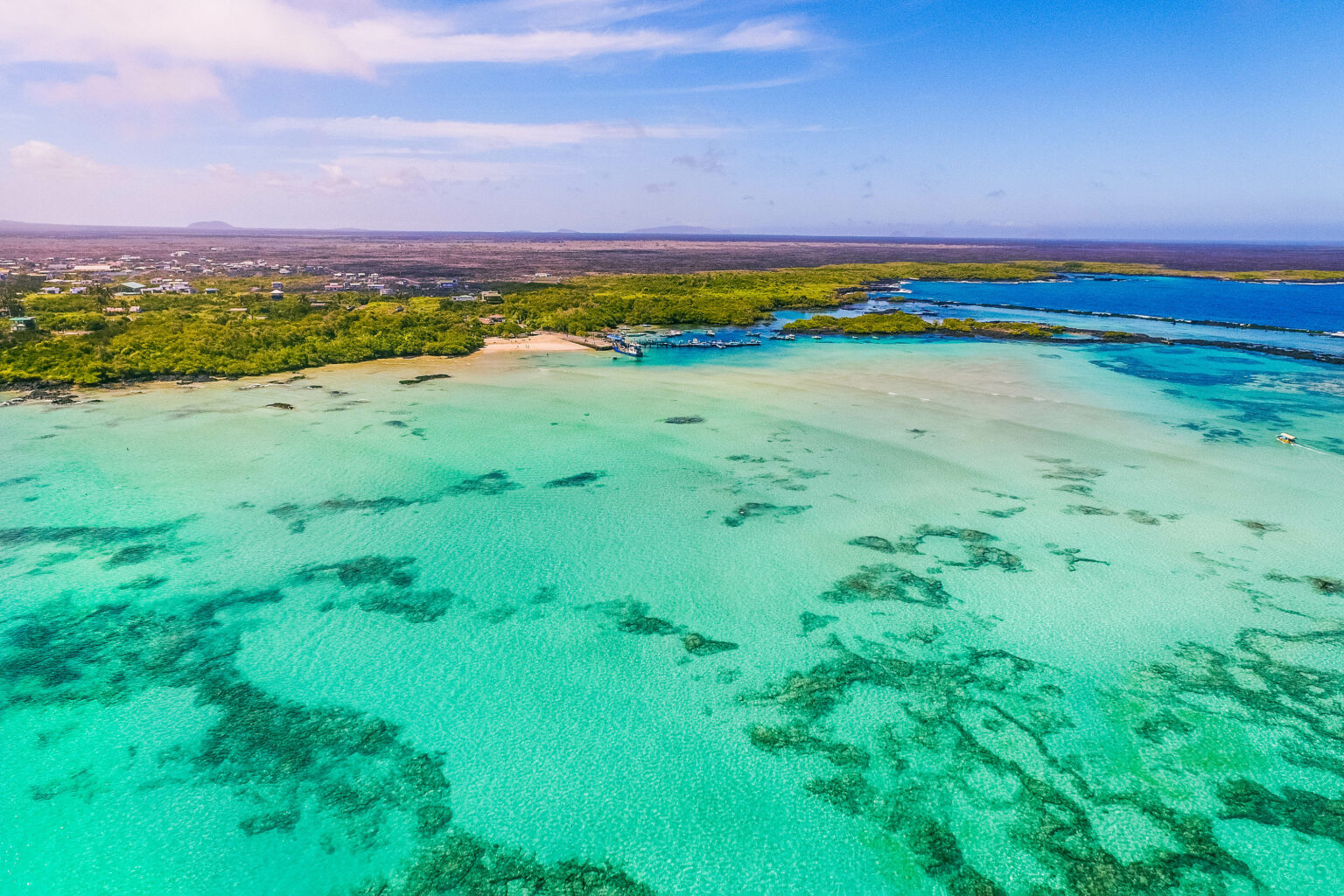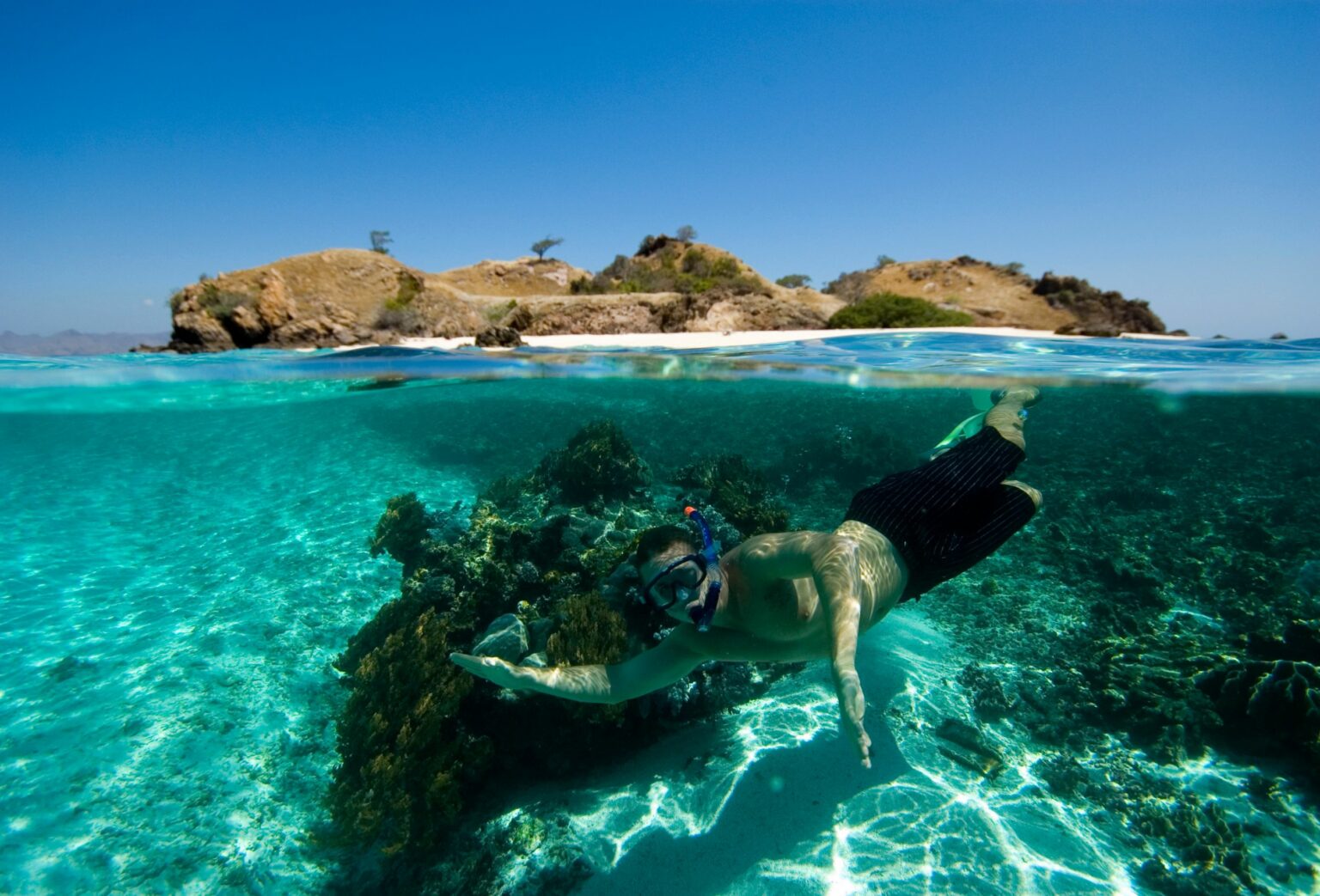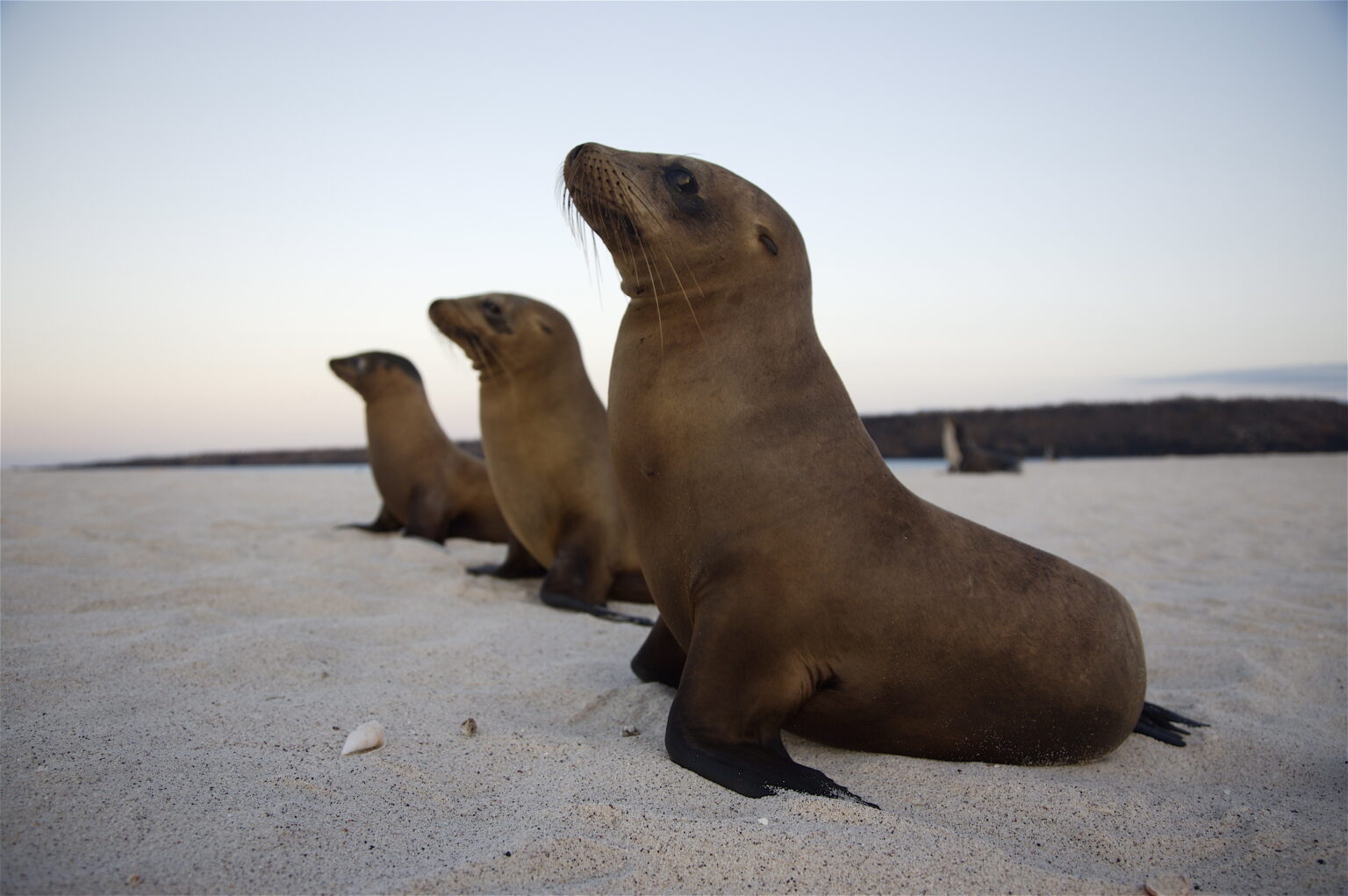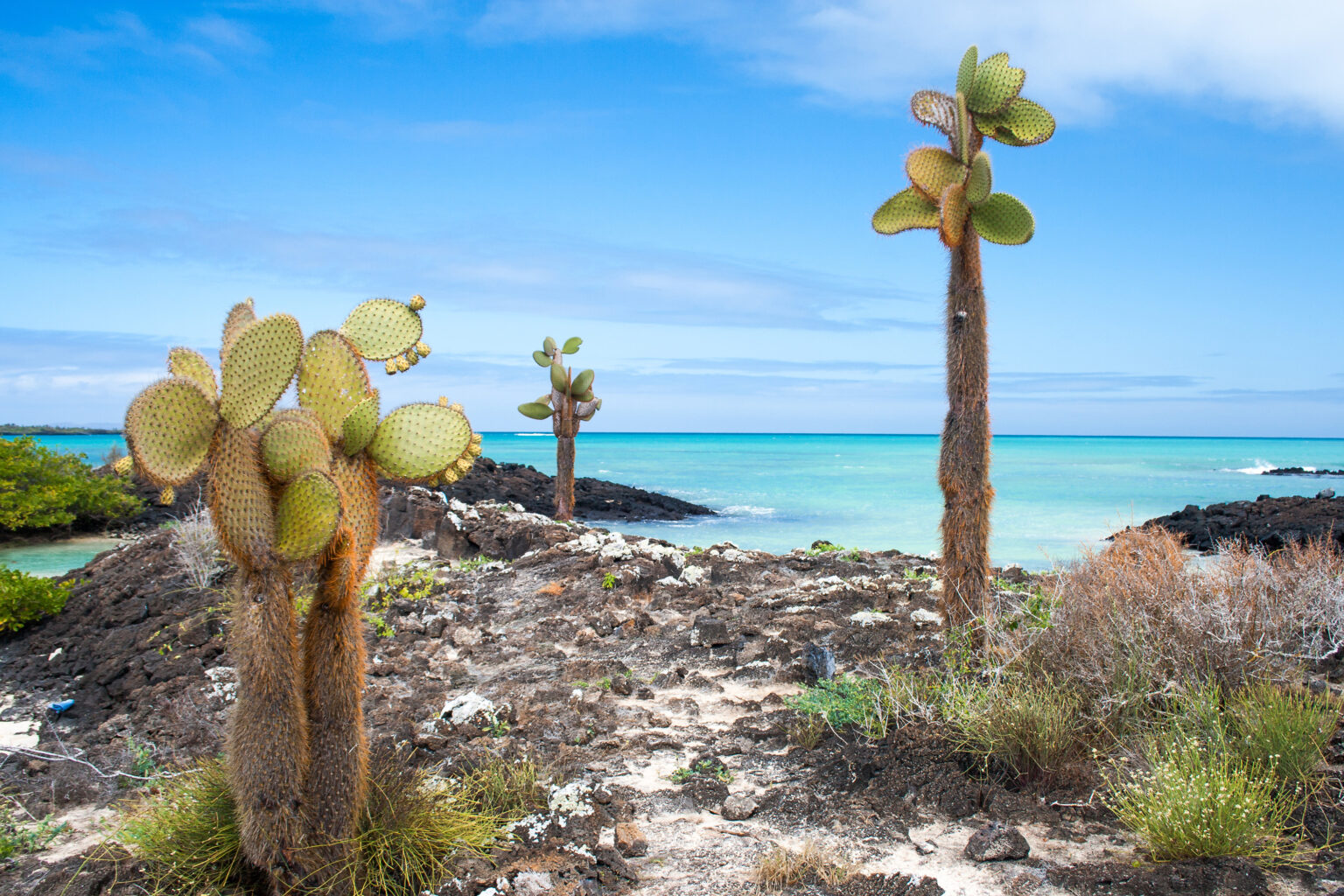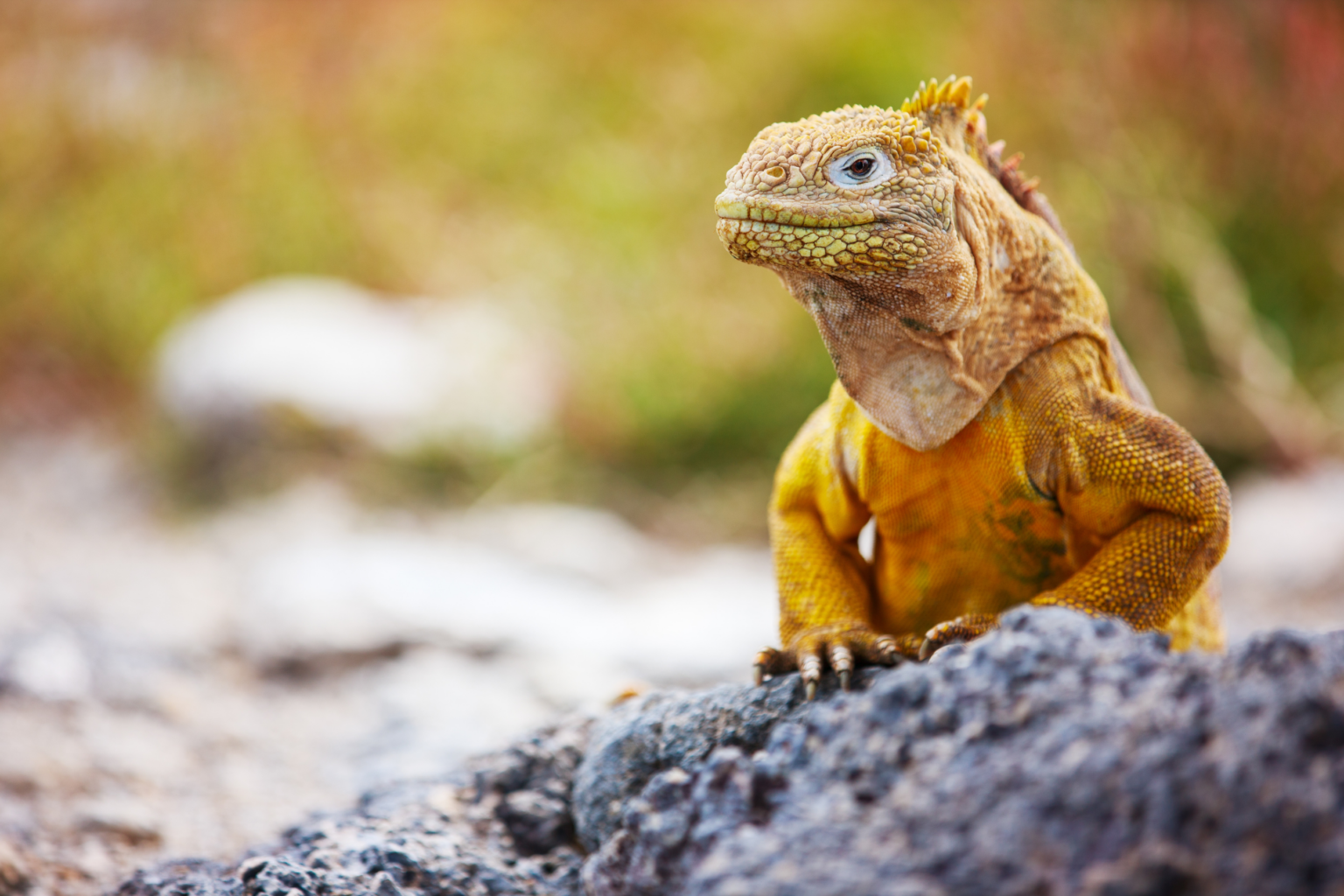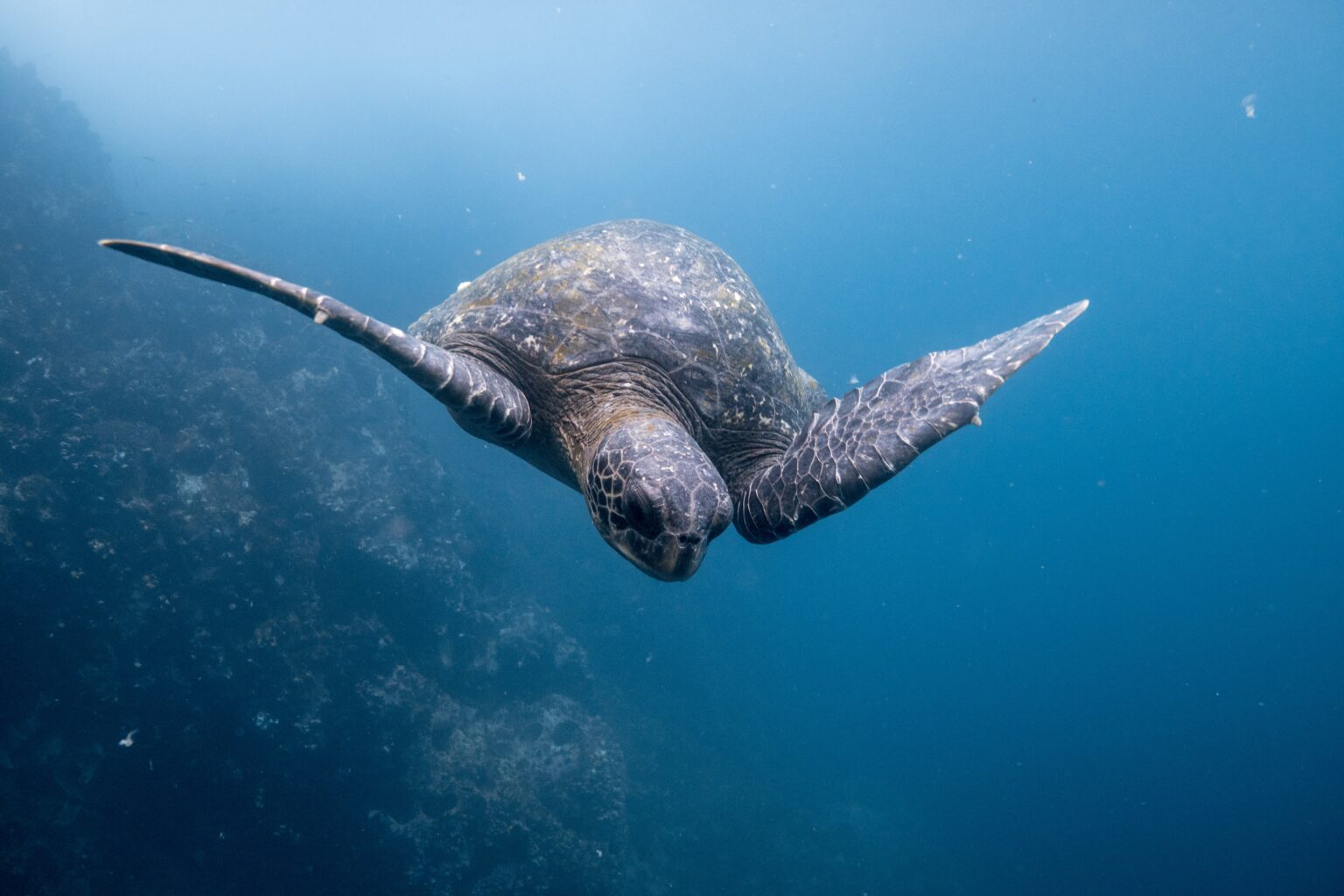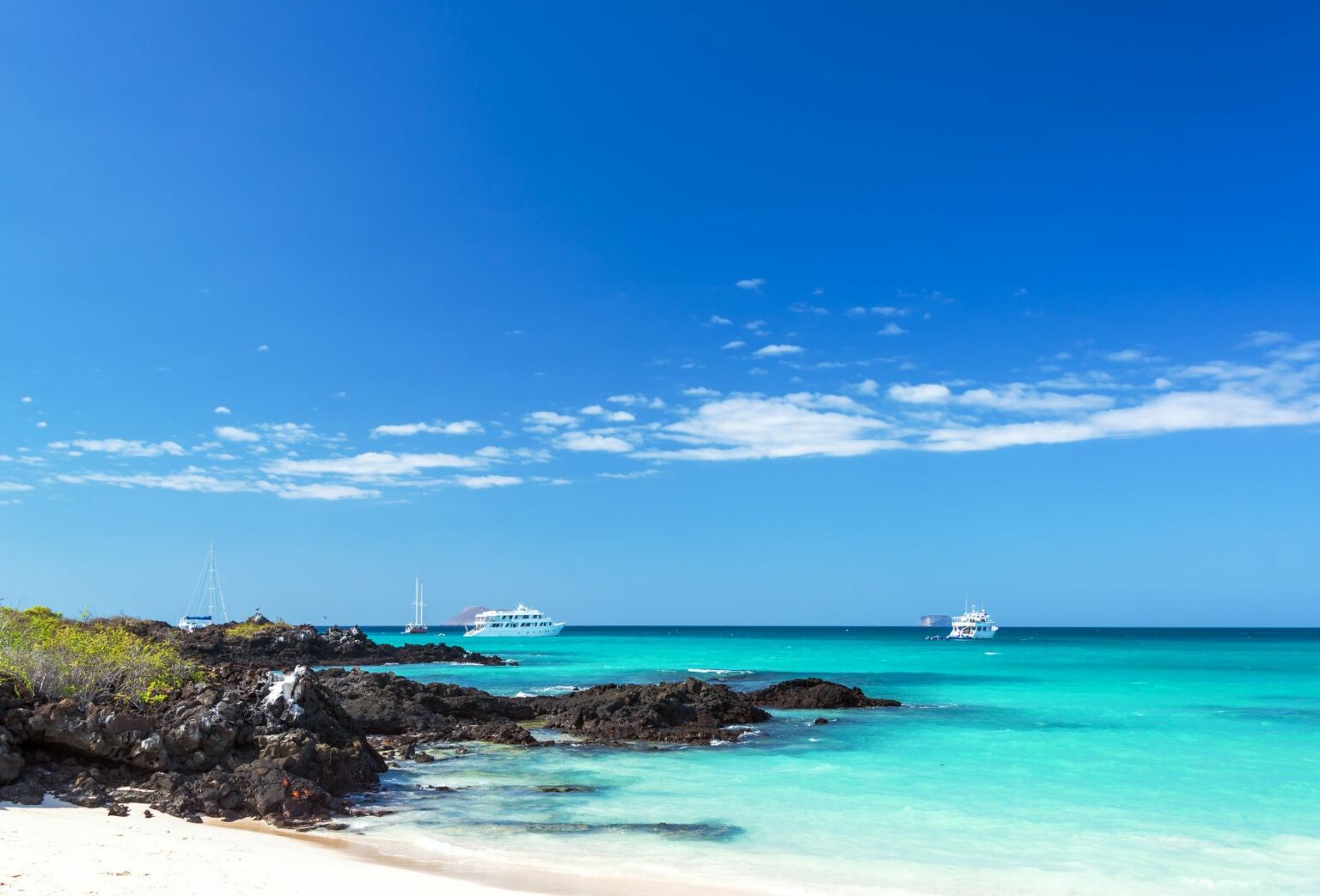Galápagos Islands: Luxury tours & activities
Comprised of 13 major islands, six minor islands, and a number of small islets, the Galápagos Archipelago sits some 600 miles west of Ecuador’s mainland. A natural treasure, they’re designated a UNESCO World Heritage Site, and a whopping 97 per cent of the area is stringently protected as a national park. Discovered in the 16th century, it was the Galápagos’ most famous visitor, Charles Darwin in 1835, who elevated the islands into popular consciousness. Today, upwards of 275,000 people visit annually to experience the surreal volcanic landscapes of these isolated islands and the unique, fearless endemic wildlife that call it home.
Galápagos Islands luxury travel highlights
- Walk amongst giant tortoises on Santa Cruz island.
- Witness the impressive (and bizarre!) mating rituals of blue-footed boobies and frigate birds.
- Snorkel with sea lions, sea turtles, manta rays, colorful tropical fish, white-tipped sharks, and Galapagos penguins.
- Interact with wildlife in a way that’s impossible anywhere else. Most animals here have evolved without natural predators and are unphased by human presence.
- Hike along Isabela’s volcanic crater, one of the largest in the world.
- Visit remnants of underground lava channels on Santa Cruz where lava once flowed.
- Educate yourself at the world-renowned Charles Darwin Research Station.
- Take a day trip to the uninhabited, more-than-four-million-year-old Santa Fe Island (the Galápagos island with the most endemic animals)
What to expect on a Galápagos Islands luxury tour
- Luxury, memorable accommodations: Whichever way you experience the Galápagos—on a small ship cruise or at an all-inclusive land-based eco-lodge on Santa Cruz or San Cristóbal—your accommodations will be experiential and luxurious. You can expect personalized and highly attentive service, sustainability credentials, gourmet dining, exceptional guiding, and exciting day excursions. Traveling deeper into the archipelago (Isabela and Floreana islands, for example), hotels are more basic, but still very comfortable.
- Exclusive experiences with expert guides: Certified guides will interpret the unique habitats, flora, and geological wonders of the Galápagos—both on land and at sea. They’ll help spot and identify wildlife, pointing out fascinating adaptations, and explaining behavior. Excursions may be shared or enjoyed with a private guide and driver, or a mix of the two. Extraordinary Journeys’ Galápagos travel partners and hotels employ the highest caliber guides.
- Seamless, worry-free travel: There are a lot of logistics involved in a Galápagos Islands luxury tour, which starts with fees and forms that need to be completed at your departure airport on mainland Ecuador (typically Quito or Guayaquil). We will work to coordinate as much paperwork and payments as possible, in advance. You’ll be able to skip a lot of lines (but not all), so your Galápagos experience is as stress-free as we can make it. Extraordinary Journeys will coordinate all inter-island flights, ferries, and airport transfers.
Galápagos Islands FAQs
Three nights is the shortest itinerary that most Galápagos Islands luxury cruises offer. For serious wildlife enthusiasts, a week or longer is ideal. You want to choose a trip that gives you enough time to explore multiple islands without feeling rushed. Keep in mind that the logistics to and from Galápagos mean that you might not get to your boat or hotel until the afternoon of your first day, and your last day will be a dedicated travel day as you make your way to the airport.
Yes, you can travel the Galápagos Islands without taking a cruise.
Land-based itineraries are a great alternative for travelers who are worried about seasickness, families with young kids who want space to run around, and those who want more flexibility than a set itinerary can offer.
Base yourself on an inhabited island (Santa Cruz, San Cristobal, Isabela or Floreana), checking into one of the best luxury resorts in the Galápagos. Explore your island on a privately guided tour or visit nearby islands on a marine safari.
Flights from mainland Ecuador arrive either in San Cristobal or Baltra. Baltra is a small island just north of Santa Cruz, so those staying on Santa Cruz can easily take a shuttle and a ferry to arrive.
You will obtain a transit card at your departing airport (Quito or Guayaquil; $20 cash-only), which you must keep until you depart the islands. You’re also required to pay an entry fee upon arrival at the airport in the Galapagos ($100, cash-only). Where possible, Extraordinary Journeys will attempt to take care of these formalities in advance, but it depends on the logistics of your visit.
U.S. citizens do not require a visa to enter Ecuador.
The Galápagos Islands is a great destination for kids, guaranteed to spark an interest in wildlife and conservation. What’s more, the wildlife here is not spooked by human presence, offering children a closer glimpse. Older kids and teens may enjoy snorkeling with marine life, surfing lessons, or being wowed by the fact that everything in the Galápagos is volcanic.
For younger tots, land-based lodging may be more comfortable than a small ship. Galápagos Safari Camp offers a family suite villa that has a playroom. All excursions are private, meaning you have your own naturalist guide and chauffeur-driven vehicle at your disposal, allowing for utmost flexibility and spontaneity on your adventures. Montemar Eco Luxury Villas boats a home-away-from-home experience and utmost privacy. With only two villas and a 12-guest max, it’s perfect if you are traveling as an extended multi-generational family, or with a caregiver. Pikaia Lodge’s spacious suites handily accommodate families traveling with kids eight and older. Flexible schedules that balance adventure with downtime and a kitchen that serves up picky-eater-approved meals make it a family-friendly selection.
Keep reading: The Best Family Vacations In South America
Given the islands’ remote location and protected status, Galápagos Islands luxury vacation packages are some of the most expensive in South America. Between the round-trip airfare from the mainland, mandatory entrance fees, and the cost of all-inclusive resorts/hotels, and guides, clients should expect to spend a minimum of $600 per person per day.
When is the best time to visit the Galápagos Islands?
There really isn’t a bad time to visit the Galápagos Islands.
Although the archipelago sits on the equator and doesn’t experience four traditional seasons, the cool Humboldt Current brings cold water into the region, and with it, rainfall and cooler temperatures. In this regard, we should think in terms of wet and dry seasons.
The wet season runs from December to May and is when seas are the calmest and temperatures are the warmest. If you’re hoping to swim or snorkel, the wet season is ideal for both warmth and visibility.
Dry season spans June through November. June boasts the warmest temperatures of the season, but the water temperature is cooling, and the seas are relatively calm. By July and August, the air and water temperatures have tempered, rain showers arrive, and seas are moving quickly, and with them, bringing more wildlife. In September and August, the air temperature is warm, but the water is cool, and the seas are choppy but teeming with marine life.
Weather aside, you may also want to consider whale and waved albatross migrations if you hope to see either.
What wildlife will I see in the Galápagos Islands?
The archipelago is famous for its unusual animal life. Look out for lava lizards, Galápagos sea lions, Galápagos penguins, magnificent frigate, waved albatross, Galápagos hawk, and flightless cormorant—all endemic to the islands.
All life here is just wonderfully unique or downright bizarre in some way. Blue-footed boobies look like dorky creatures from out of this world, and with luck, you will witness a mating ritual where the male shows off his fabulous feet with an exaggerated high-stepping strut. If you snorkel or dive, it’s not uncommon to see a penguin zooming past a brightly colored tropical fish. And after an hour of holding their breath underwater, marine iguanas—by the hundreds—can be seen swimming to shore to bask on coastal rocks in the sun.
But it’s the giant tortoises that steal the show. They are believed to have some of the longest life spans of any creature on Earth, up to 150 years. The average size of the Galápagos tortoise measures almost five feet long, and one can weigh almost 1,000 pounds! Twelve living species of giant tortoises remain in Galápagos, and their population is currently estimated at 20,000 individuals.
Unlike most wild animals, wildlife in the Galápagos generally lacks the fear that sends them running. Thanks to the regulations protecting this national park and a lack of natural predators, animals aren’t always threatened by humans—this is their territory. As a result, observers are able to get relatively close to wildlife without them scurrying away.
Where to go on a luxury Galápagos Islands vacation
Galápagos can be explored by land, water, or a mix of both. How you choose to plan your trip depends on personal preference, budget, and your travel dates.
Santa Cruz, one of the gateways to the rest of the archipelago, is where you might set off on a multi-night expedition cruise, or base yourself at a land camp and take day trips to nearby islands. An Extraordinary Journeys Galápagos specialist will design an itinerary that keeps you as central or remote as you want to be. The major islands include…
Santa Cruz
Centrally located in the archipelago, Santa Cruz is the most populated of the four inhabited islands. The island has a bit of everything: sandy beaches, lush highlands, Tortuga Bay, the world-renowned Charles Darwin Research Station, and the buzzy hub of Puerto Ayora.
San Cristobal
San Cristobal is the easternmost island in the Galápagos archipelago and one of the oldest geologically. It’s made up of a handful of fused volcanoes, all extinct. There’s the small town of Puerto Baquerizo Moreno and offshore, you’ll find one of the best dive sites in the Galápagos.
Isabela
While Santa Cruz is an obvious choice for a land-based tour, we love combining it with the more remote and less populated Isabela Island—a perfect balance to the busier Santa Cruz. Plus, Isabela is home to penguins. Despite its size (the largest Galápagos island), Isabela has few roads. Visitors staying on land have the advantage of hiking the Sierra Negra volcano; those touring by boat can access the far-flung corners that lay beyond the reach of its roads.
Floreana
Less developed and the least populated of the inhabited islands, Floreana offers a more natural, castaway island experience. The first to be settled, its history includes pirate lore, whalers, and a documentary-worthy murder mystery. Snorkel its clear waters, hike to pirate caves, and collect mail at Post Office Bay.
Galápagos Islands luxury cruises versus land tours
Visiting the Galápagos islands requires you to decide whether to cruise or experience a land-based luxury tour. Neither is implicitly better, each has distinct merits, and it’s also possible to mix and match both.
Cruising the Galápagos Islands
Exploring the Galápagos by small ship or luxury yacht means navigating the archipelago without needing to return to your land-based hotel or resort each evening. You’ll have greater access to more remote islets, perhaps encountering few others outside of your group and crew, and feel the awe of floating adrift in the great blue Pacific.
Before choosing a vessel for your Galápagos Islands luxury cruise, there are many things to take into consideration, including:
- Dates of travel: Cruises run on their own schedule, departing on varying days of the week. Your preferred travel dates and how far in advance you book may determine which itineraries do/don’t work.
- Length of visit: Select from just a few nights to more than a week.
- Ship size: Choose from a small, intimate expedition-style vessel of 16-20 passengers to a larger Galápagos Islands luxury cruise of up to 100. As a rule of thumb, the smaller the ship, the more luxurious and personalized the experience. If you want to cruise but are mindful of the rocking sea, consider a larger yacht.
- Route/points of interest: Cruise itineraries vary from boat to boat, and expedition to expedition. Each island is unique and has its own appeal; there is no “bad route.” You’ll often find that boats offer alternating “A” and “B” routes. This is due to National Park regulations. By alternating routes, damage to marine life and the volume of foot traffic on the islands is managed and mitigated. If you have a specific interest, let your Extraordinary Journeys Galápagos expert know so we can guide you to the best available option.
Some of our favorite luxurious small ships for a Galápagos Island luxury cruise are the Aqua Mare, Natural Paradise, M/V Origin and Theory, Infinity, Endemic, the Relais & Châteaux-associated Ecoventura fleet, and Cormorant II.
Land-based luxury Galápagos tours
Some travelers simply prefer not to travel by boat. A land-based Galápagos tour is not a lesser option.
A few reasons travelers might opt to be land-based:
- Flexible arrival and departure dates
- Prone to seasickness (the sea is choppy between July and September)
- They want the complete amenities of a resort
- Parents with younger kids want room to roam
- It can be a slightly more budget-friendly option
Note: though it is an island destination, Galápagos is not classically a beach destination. Only a handful of the best hotels are located near the beach, with most set inland or in the highlands.
Some of our preferred land-based properties include Galápagos Safari Camp, which replicates an Out of Africa tented camp but in South America. Pikaia Lodge is sustainable Relais & Châteaux-luxe with the menu to prove it. Montemar Eco Luxury Villas offers a boutique, owner-operated, exclusive-use home-away-from-home experience. Finch Bay is a budget-friendly option for families, complete with a pool, and located just minutes from a beach, and a short water taxi away from restaurants and amenities.
Easy extensions
Flying through Quito offers easy connections to other must-visit destinations in South America. Easily add Machu Picchu (Peru) onto your luxury Galápagos trip, or delve deeper into Ecuador, visiting its volcanic highlands, Cloud Forest, or Amazon rainforest.
Luxury Galápagos Islands trip itineraries
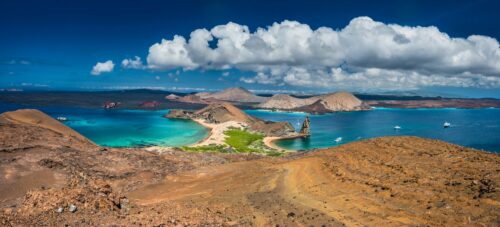
- Itinerary
One Week in Ecuador: Galápagos by Land + the Highlands
This week-long trip to Ecuador highlights two of the country’s most coveted regions
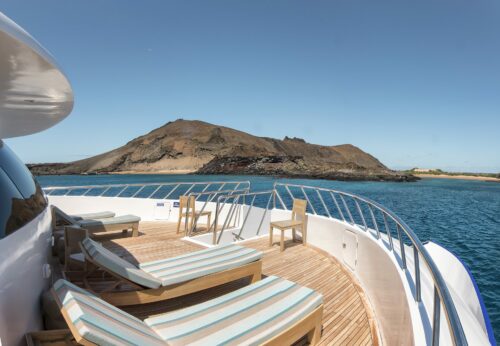
- Itinerary
Galápagos by Boat + Ecuador’s Tropical Lowlands
There’s no better way to travel the Galapagos Islands than by boat
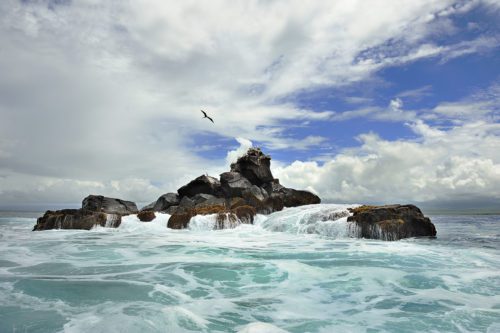
- Itinerary
Ecuador & Peru: From Galápagos to Machu Picchu
Wilderness of the Galapagos and Cultural History of Machu Picchu
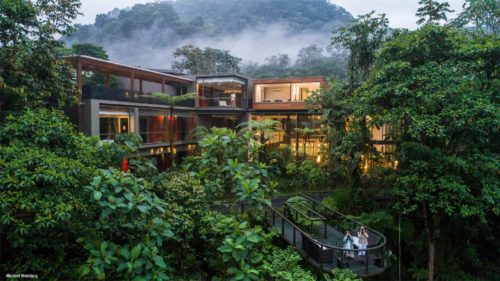
- Itinerary
Ecuador Wilderness and Wildlife
Historic Quito, luxury Galapagos cruise, Amazon Jungle, and enchanting Cloud Forest
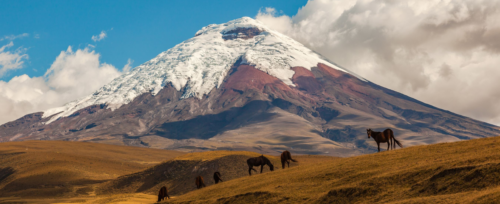
- Itinerary
Luxury Ecuador
Visit the Galapagos Islands, the Andean Highlands, and the Avenue of Volcanoes
Our favorite luxury hotels & resorts in the Galápagos Islands
Read more about luxury Galapagos travel
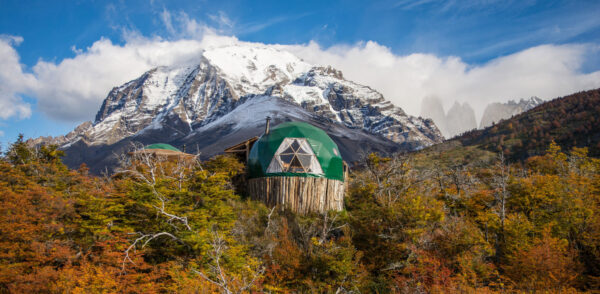
The Best Places to go Glamping in South America
The idea of luxury camping is hardly a new one—African safari camps immediately spring…
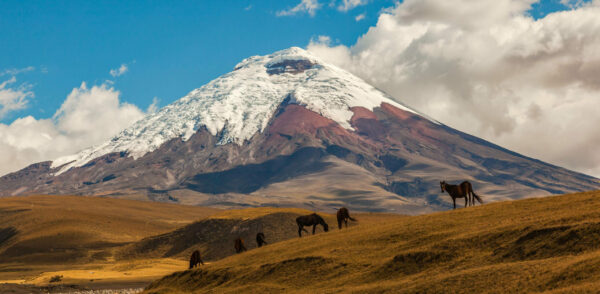
Just Back From: Ecuador and the Galápagos with our South America expert Olivia
Come face to face with playful sea lions, dine farm-to-table in a presidential hacienda,…

The Best Galápagos Islands Resorts and Hotels
The Galápagos Islands, a remote archipelago 600 miles off the coast of Ecuador, remained…
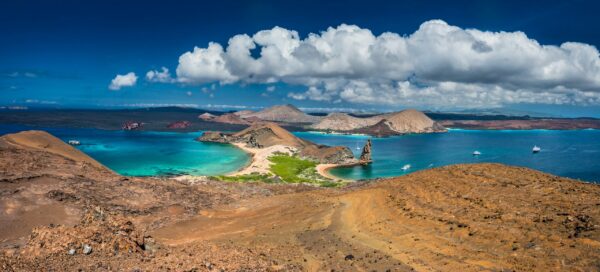
The Travel Guide to Cruising the Galápagos Islands
From the best time of year to visit to spotting the most elusive wildlife, here’s…
Other places to explore
Plan your trip
Ready to start planning your own incredible adventure? We make the process stress-free and enjoyable.

